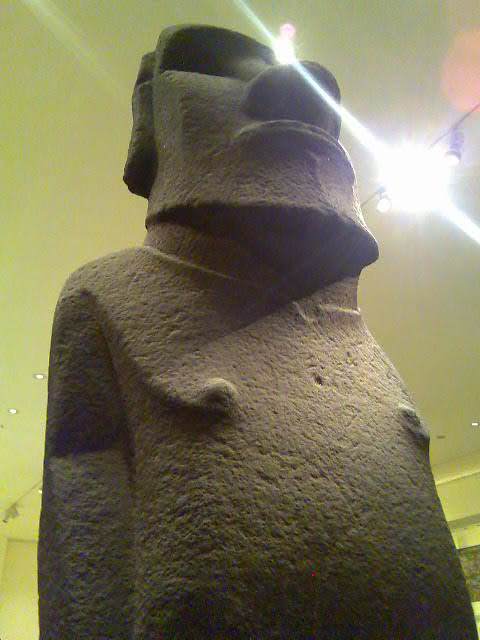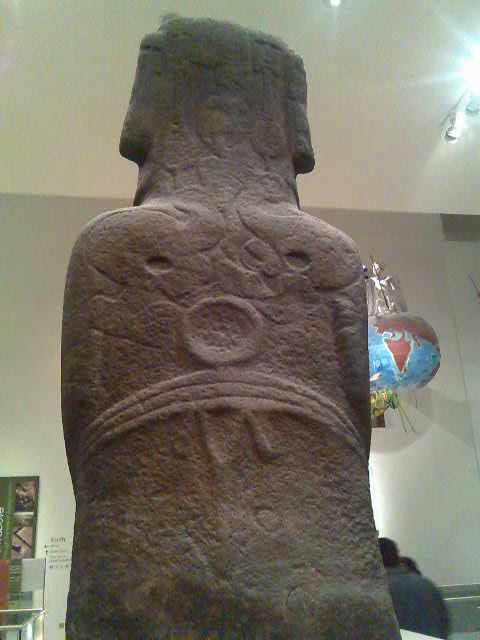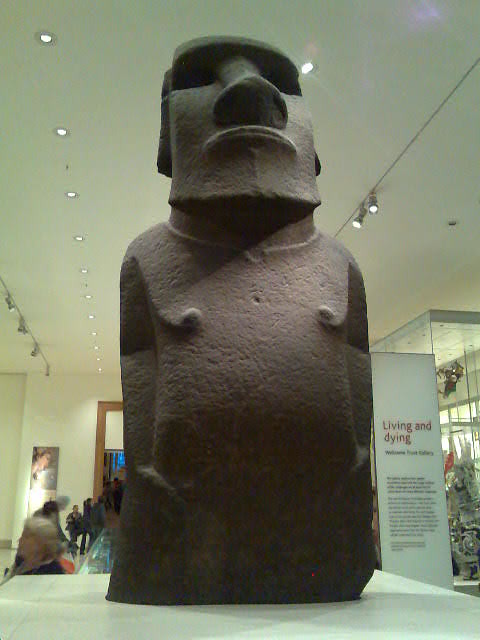Here I am at sea where nothing of any great interest happens. That’s the way I like it – interesting things happening at work are seldom good (with the very occasional occasion of dolphins and whales) nor are they really very interesting. Interesting or not, I should imagine that my employer might be interested if he found out and I might have the terms of my contract examined. Never mind, it so happens that I have a pile of old photos out with me so why not a few odds and ends from the archives.
 The lab internet has been working particularly well since I came on board, not only enabling me to post blogs but it’s also working well enough for me to listen to the radio in the BBC listen again service, so for the last few days I’ve been catching up with The History of the World in 100 Objects - a superb collection of 15 minute programs which complement a chemist’s labours excellently but I would just as easily recommend them with a cup of tea and a couple of digestive biscuits. The objects are all from the
The lab internet has been working particularly well since I came on board, not only enabling me to post blogs but it’s also working well enough for me to listen to the radio in the BBC listen again service, so for the last few days I’ve been catching up with The History of the World in 100 Objects - a superb collection of 15 minute programs which complement a chemist’s labours excellently but I would just as easily recommend them with a cup of tea and a couple of digestive biscuits. The objects are all from the He is around 4 tons of the most memorable basalt you’re likely to come across (one of 16 Easter island statues made form basalt – the rest are made from softer stone) and thought to have been made around 1000AD and would originally have stood on a stone platform at the edge of the island with his back to the sea. He had inset eyes of coral or obsidian and was painted red and white, but this washed off in the sea when he left the island. He was probably carved to commemorate ancestors but in the middle of the seventeenth century he had his back carved with figures and symbols relating to the Birdman cult with was prevalent on the island at that time.
On the 7th of November 1868, the people of the island helped to carry Hoa Hakananai'a on board the HMS Topaze and he arrived in Portsmouth
Later on in the day, I was listening to a program on a Ming banknote. It had a picture of the number of coins it was worth on it – perhaps our fiver should have a little picture of ten 50p pieces on it. But what amused me was that it was referred to as a treasure certificate – surely far better than calling it a note. Looking in my pocket, I see I have £15 pounds worth of treasure certificates.



9 comments:
He reminds me of a history professor I once had although Hoa Hakananai'a appears to have more personality. That was one L-O-N-G course!
It's a good thing our notes don't have the value in coins represented on them. It's bad enough that a $20 bill doesn't buy what it used to. I'd really be disturbed to see an image of $11.49 in coins on the note!
Before you know it they'll be printing coins with pictures of dollars on them instead.
It's quite a treat seeing one of these statues in good light and close up, I've only seen pictures of them in books and they tend to be photograghed almost silhouetted.
That's one badass bunch of basalt!
That is one impressive garden gnome!
Bank notes sound good. I have been magicing pennies into pounds much to my granddaughters amusement. Problem is she kept the coins and insisted I re do the magic....cost me all my small change! Who's the clever one I wonder!!
Poppy it's quite a thing to see and only a short train journey between Swindon and it (I wouldn't fancy finding a parking space for Comfortably Numb round there).
Thanks for dropping in Don, it certainly is the badassest bit of alliterry basalt ever to appear in this blog.
Anne, that's a good trick - I've got a bag of pennies here if you want to show me how it's done. Glad you've found your way over from Wordpress
Anne, I'm sure it would defeat those people who kidnap garden gnomes and take them around the world.
Sandy, did you say chemist? Does that mean "pharmacist" in Britain?
Dave, it does but not in this case. The number of people over here that initially think I spend a week handing out asprin and penicilin is amazing. I'm a chemist of the things to do with chemistry type. Probably quite sensible over there to give two completely different jobs, completely different names.
Post a Comment